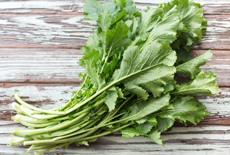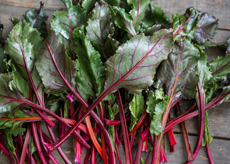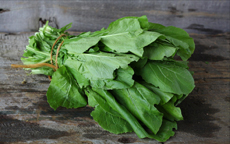TIP OF THE DAY: Sauté Your Greens

|
Your recommended daily fill of vegetables may be raw or cooked; fresh, frozen, canned, or dried/dehydrated; and may be whole, cut-up, mashed or puréed. A glass of a 100% vegetable juice counts as a serving. YOUR CHOICE OF VEGGIES The USDA organizes vegetables into five subgroups. Your daily servings can come from any of them, although a mixture is best for rounded nutrition: The USDA has handy charts at ChoseMyPlate.com, including the quantity of each option that constitutes a serving—1 cup of raw or cooked vegetables or vegetable juice, or 2 cups of raw leafy greens, for example. We’re happy to eat our green, red and orange vegetables steamed. When we have more time, we roast root vegetables. Our friends at Good Eggs, a premium grocery delivery service in San Francisco, nudged us a bit by sending us these tips and recipe. Use this sauté technique with any and all leafy cooking greens—broccoli rabe, chard, collards, kale, mustard greens, spinach, turnip greens, etc.—plus garlic and onions. Sauté the greens in olive oil with the garlic and onions and you’ve got a simple, delicious side. |
|
|
Don’t hesitate to sauté a medley: Mixed greens give you more flavors to enjoy. This is your opportunity to try greens you haven’t had before. You’re bound to enjoy anything sautéed with onions and garlic. Ingredients ____________________ |
||
|
Preparation
1. COVER the bottom of a large sauté pan or skillet with olive oil, and place it over medium-heat. Add the garlic, onions and a pinch of salt. Sauté until the onions are translucent but before they turn golden brown. While the garlic and onions cook… 2. PLACE the greens in a colander and rinse quickly with cold water. Shake off the excess but don’t worry about patting dry: a bit of water clinging to the greens will help in the cooking. 3. TURN the heat to high, add a pinch of chile flakes, then add the greens. Once the greens are in the pan, move them around with a pair of tongs and add a pinch of salt. 4. SAUTÉ until the greens are just tender, 2-4 minutes (taste to determine). If all of the water has evaporated before then, add a splash of water. Finish with a squeeze of lemon and salt to taste. Green onion (scallion) and spring onion are different members of the Allium genus, the “onion genus.” |

|
|
|
Well, all in the Allium genus (the family is Amaryllidaceae):
|
||





